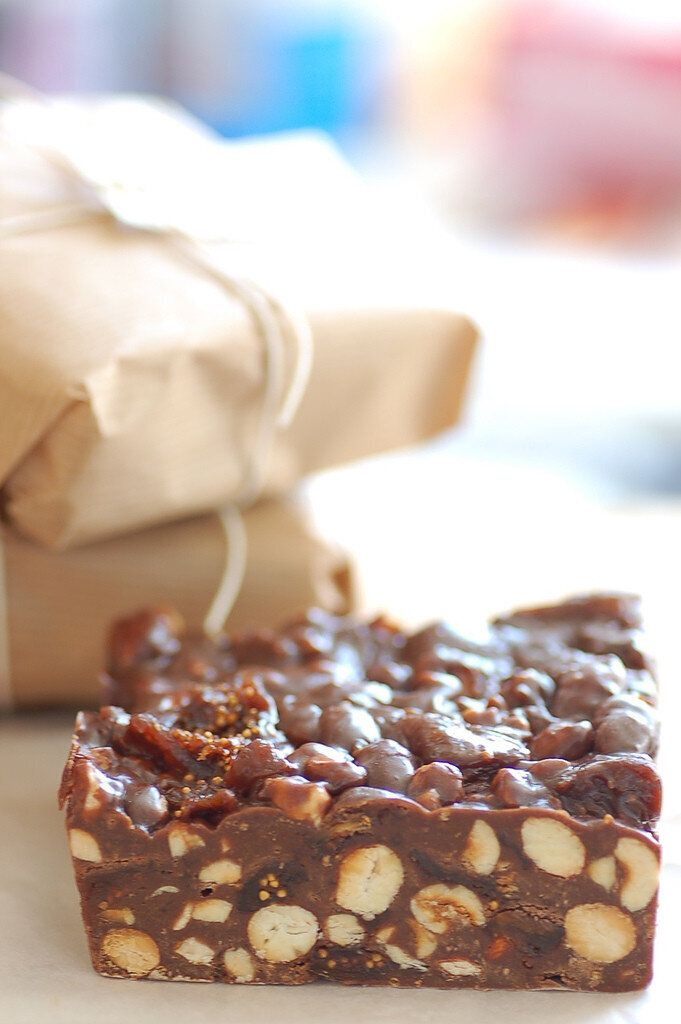
You've probably heard of Panforte and Panettone -- the former meaning "strong bread," the latter, "small bread" (although Panettone is usually a tall, poofy affair packaged in a hat box, and Panforte is, well, small -- go figure: it's Italian). Both are essential to the Italian table at Christmas and both festive packages show up in shops around here during the holidays (for Panforte, look for those flat, round, string-tied, paper-wrapped packages with Italian writing and designs on them).
I've seen lots of types of Panettone in local supermarkets -- even Home Goods sells them. But Panforte -- now that's a little harder to find, but the thing is, you can make it at home -- it's much easier to make than its appearance lets on.
The origins of Panforte, attributed to the Italian city of Siena, are as complex and dense as the low-rise confection itself. It dates back to the Crusades and the spice trade. It is said to have been used during the 12th century as currency since it is packed with spices that were rare and expensive at the time. And its shelf life made it convenient for energizing soldiers in the field -- a marauder's energy bar.
In my travels in Italy, I once stumbled upon the pastry shop of my dreams, the Pasticceria Mariuccia in the Tuscan city of Montalcino. There is showcased the best expression of Panforte. If, like me, you begin to vibrate with indecision when you enter an Italian pastry shop, Pasticceria Mariuccia will leave you breathless. Inside the lovely shop, Panfortes of every flavor are piled high behind sparkling glass bays. The place is redolent with the aromas of chocolate and cloves, coriander and bitter almond. There are marzipan-coated Panfortes, pepper-specked ones and lots of powdery, cocoa-dusted discs. A small slice with a good cup of coffe or (traditionally) a glass of sweet dessert wine (like Vin Santo) is a religious experience!
Who knew this exotic dessert from the middle ages could be so easy to make. Although it requires an arsenal of ingredients (and they all better be high quality) it is very light on technique.
Serve it at Christmas and your guests will be impressed. Keep it around for a high-energy, tea-time snack and you'll be satisfied with just a nibble.
Here, then, is a basic Panforte recipe, which I've made and eaten most of myself. It is endlessly tweakable. For example, vary the type of nuts according to what you like. That goes for the spices, too. Some recipes add black pepper or pumpkin-pie spice.
Use the same amounts of dried fruits as in the recipe, but you may want dried cherries or dried apricots (full of calcium!) rather than raisins and figs.
Although most Panforte recipes call for cooking the sugar and honey together with butter, then adding the mixture to the dried fruits and nuts, this one eliminates that cooking step and the result is still good -- and lower in fat to boot.
Buon Appetito!
Basic Panforte
Serves 8-12
Preheat oven to 300 degrees.
Lightly oil (or use cooking spray) a 9" round baking pan. Line the bottom with parchment paper; oil the paper; dust the sides of the pan with flour and knock out the excess.
Assemble ingredients:
½ cup fresh-squeezed orange juice
½ cup honey
½ cup packed brown sugar
¼ cup unsweetened cocoa powder
½ cup unbleached white flour
2 tsp. ground cinnamon
½ tsp ground cloves
½ tsp. ground ginger
½ tsp. ground coriander
1 cup lightly packed, coarsely chopped dates
1 cup lightly packed, coarsely chopped figs
1 cup raisins
1 cup toasted hazelnuts, coarsely chopped
1 cup toasted almonds, coarsely chopped
Confectioner's sugar for dusting the top of cake when cooled
In a food processor, mix the OJ, honey, brown sugar, cocoa, flour, all the spices, and all the fruits until well mixed. Scrape mixture into a mixing bowl and stir in the nuts.
Spread batter evenly in the prepared pan (mixture will be very stiff and thick).
Bake for about 1 hour, turn off the oven and leave the cake in the oven to harden and dry for about 15 minutes.
Let cool on rack then invert onto serving plate and remove parchment. Dust top with confectioner's sugar when cake is completely cooled.
Cut into thin slices and serve with Vin Santo.
To store, wrap cake in parchment, then again with plastic wrap and store in a cool place. It will keep for about 3 weeks.